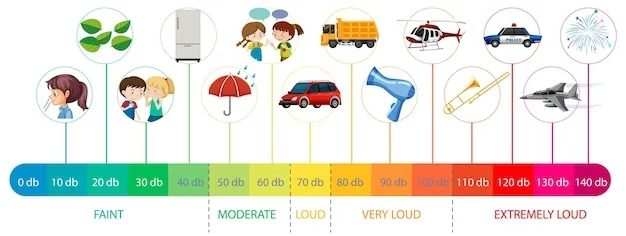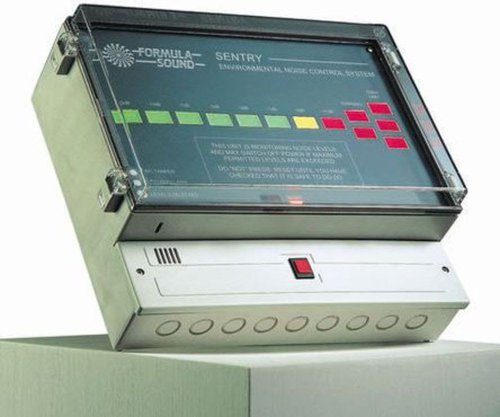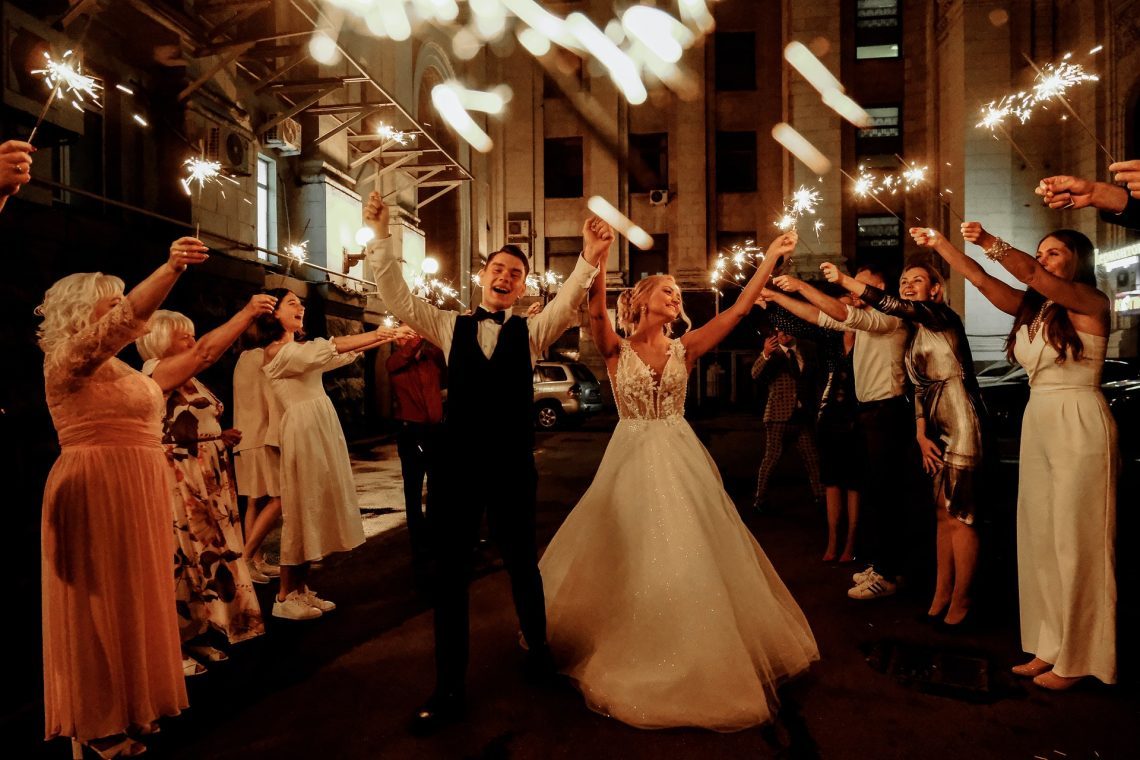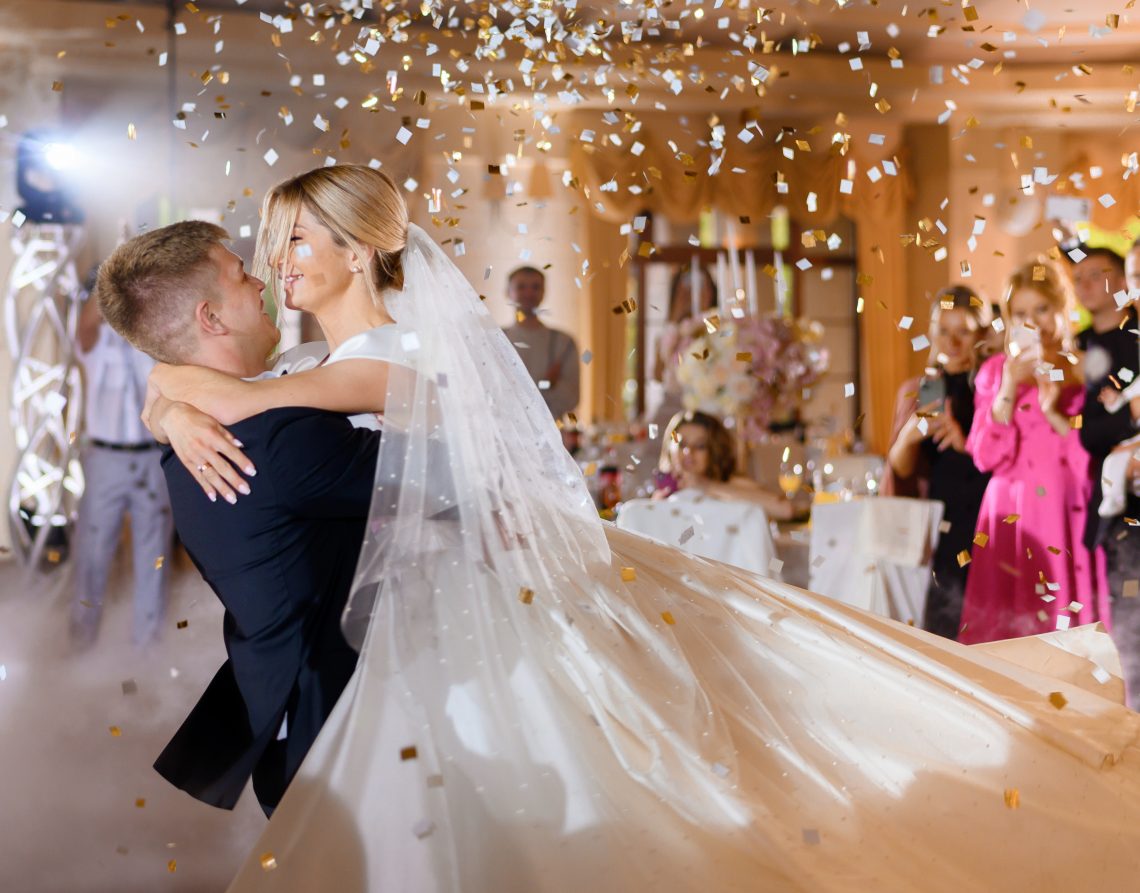Booking a venue with a sound limiter or noise restrictions? Read our simple guide to learn what 'too loud' really means.

Have you ever been in a situation where you’re dancing away with friends, and suddenly – the music cuts out? That’s what happens when a sound limiter exceeds its volume limit. Here’s our guide on how to avoid this happening to you!
What is a sound limiter?
A sound limiter is a device that measures the sound pressure level, which is a technical way of assessing the actual volume of sound. With this in mind, it’s useful to understand how they work and how they might impact your event.
Operating in decibels (dB), sound limiters help venues monitor and manage the level of noise throughout an event. They ensure that the sound remains within a specified range, balancing a lively atmosphere with necessary sound regulations.
There are several reasons why venues might have to comply with these restrictions:
Noise Complaints from Surrounding Neighbours
Depending on the location of the venue, you may find that some are surrounded by neighbouring residents. Such venues must be considerate of the amount of noise pollution they produce so as not to disturb the locals.
Control of Noise for Employees
Sound limiters, while sometimes viewed as dampeners of live events, play a crucial role in maintaining manageable noise levels. Regular exposure to loud noises can adversely affect the hearing of staff members.
Non-compliance with the Control of Noise at Work Regulations 2005 could result in fines or, more severely, prosecution. Employing sound limiters offers multiple advantages, including safeguarding employees’ hearing.
Protecting Grade Listed & Historical Buildings
Loud sounds, through their intense vibrations, have the potential to harm historically significant buildings if they reach excessive levels. A limiter might be installed in certain venues to not only protect the building but also to adhere to insurance requirements.
The Decibel Scale (dB)
The decibel scale helps make sense of the wide range of sounds the human ear can hear, from the quietest, like a nail clipper, to the loudest, like a jumbo jet engine.
A decibel scale comparison chart provides a clearer understanding of these differences; just take a look at the one below:

Types of Sound Limiter and How They Work
As you can imagine, there are a few different ways to monitor sound levels, and the equipment or method your venue uses will depend on their reasoning for having to do so.
Automatic Volume Controllers
This type is permanently installed in venues. It’s linked to an environmental noise control unit that can regulate sound levels by connecting to audio sources like mixers.
Live function bands, with limited control, risk equipment damage from incorrect settings, such as power cuts affecting laptops and guitar amplifiers, making these limiters less favoured.

Mains Power Units
The common traffic light system limiter signals nearing sound limits (Green: safe, Amber: warning, Red: imminent power cut). This type gives bands fair warning of when the power will cut, so they are much easier to accommodate.
Set by an environmental health officer, this limiter takes into account the venue’s location and neighbours.
Handheld Decibel Readers
You may hear a sigh of relief when you tell a band that the venue are monitoring the sound with a handheld reader, and there’s good reason for this.
For starters, the band’s equipment is in no danger of being damaged by a sudden cut of power. Also, it usually implies the venue is not under as strict terms if they’re using this method.
That being said, they may still have restrictions to adhere to, but at least this can be communicated and resolved without shutting down the event entirely.
Zone Array / Sound Ceilings
Now, these aren’t technically sound limiters, but they are a popular solution to sound regulations.
Zone Array systems, or sound ceilings, direct music towards the dance floor while reducing sound elsewhere. While ideal for DJs and smaller venues mindful of neighbours, many live bands, especially rock and indie groups, avoid these systems due to their impact on performance energy and guest engagement.
How do I find out if a venue has noise restrictions?
You simply need to ask the question; you’ll find some venues don’t promote the fact they have a sound limiter.
It may seem strange that this is the case, but it’s happened to a few too many bands, often at the client’s expense. You should also be prompted in the contract to check if a venue has a limiter or restrictions in place when booking a band.

Does it matter to me if a venue uses a noise limiter?
The effectiveness of a sound limiter depends on its settings and the type of music being played. A 100dB limit usually works well for most music, including rock, but an 85dB limit might be too low for a high-impact performance.
Professional bands aim for a perfect volume balance – loud enough to energise and get people dancing, but not so loud that it drives guests away.
Classical artists or acoustic duos generally don’t face issues with sound limiters, as their performance volume is typically lower. However, some bands, especially those for evening events, might decline to play under sound limiter restrictions. Discussing this with your band and ensuring everyone is informed before signing any contracts is important.

How Do Bands Accommodate Sound Limiters?
Sound limiters are becoming much more common nowadays, so you’ll be pleased to know that most party bands and wedding bands can alter their setup to accommodate them.
If you’ve found ‘the band’ and they aren’t keen on the venue’s terms, then perhaps try suggesting some of the following ideas to see if they can work around the limitations.
Electric Drum Kits
The first solution is to use an electric drum kit. Since an acoustic drum kit, particularly the kick drum and snare, often triggers the limiter, switching to an electric kit allows the drummer to easily adjust the volume to stay within the set limits.
Direct Injection
Using a Direct Input (DI) is an effective method for bassists to manage low-level frequencies. This is especially useful since bass amplifiers, known for their low frequencies that travel far, are common causes of noise complaints. A DI enables bassists to control these lower frequencies easily.
Hots Rods and Brushes
Percussionists often use brushes, especially in jazz or ‘live lounge’ style sets, at venues with strict sound limits. Hot Rods are another popular choice, offering a high-quality sound at lower volumes. For extremely low thresholds, the Cajon, a box for percussive sounds, serves as an ideal alternative.
In-Ear Monitoring
In-ear monitors (IEMs) help bands effectively monitor and control their sound levels, eliminating the need for floor monitors that can add unnecessary noise.

You needn’t be an expert on sound limiters to have the perfect wedding, but we hope our guide clears up any lingering questions.
And remember, if it’s all getting too complicated with the technical talk, you can suggest that the venue contact us to discuss their terms, or vice versa.
With that being said, here is our final checklist below for you to go through to ensure the planning of your wedding goes smoothly.
DG’s Sound Limiter Checklist
- Check if your venue has a sound limiter.
- Check if your chosen band are able to play with a sound limiter.
- Ask if your band has a different set-up that may accommodate a sound limiter.
- Thoroughly enjoy your wedding day without any worry of a power cut!